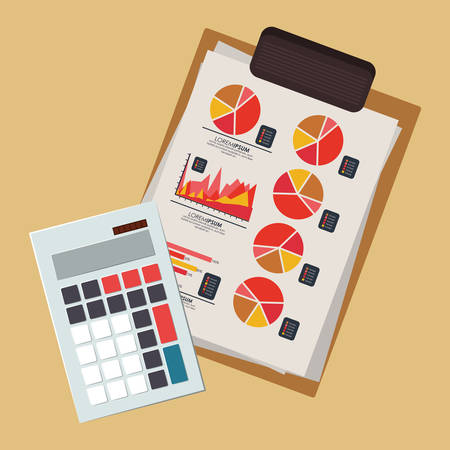1. Understanding VAT and Your Legal Obligations
Value Added Tax (VAT) is a key component of the United Kingdom’s tax system, applied to most goods and services sold within the UK and the Isle of Man. For businesses, understanding how VAT operates is essential, as compliance is both a legal requirement and a crucial part of daily operations. VAT is an indirect tax collected by businesses on behalf of HM Revenue & Customs (HMRC). It is ultimately borne by the final consumer but must be accounted for at each stage of the supply chain.
There are three main VAT rates in the UK: the standard rate (currently 20%), the reduced rate (5%), and the zero rate (0%). The majority of goods and services fall under the standard rate, while essentials such as domestic fuel or children’s car seats may qualify for reduced or zero rates. Some goods and services are exempt from VAT altogether, including postage stamps, financial services, and property transactions.
UK-based businesses must closely monitor their taxable turnover. If your business’s taxable turnover exceeds £85,000 in any rolling 12-month period, you are legally required to register for VAT with HMRC. Voluntary registration is also possible if your turnover is below this threshold, which can be beneficial for certain businesses wanting to reclaim input VAT on purchases. Understanding when registration becomes mandatory—and what it means for your business processes—is a fundamental first step towards effective VAT management in the UK.
2. Registering for VAT
Registering your business for VAT with HMRC is a crucial step in complying with UK tax regulations. The process can seem daunting at first, but breaking it down into manageable steps makes it much more straightforward. Below, you’ll find a detailed guide to help you through the registration process, including essential documentation and tips for using the government’s online portal.
When Must You Register?
Your business must register for VAT if its taxable turnover exceeds the current threshold (£85,000 as of 2024). You may also choose to register voluntarily if your turnover is below this amount, which can allow you to reclaim VAT on business expenses.
Essential Documentation Required
| Document | Description |
|---|---|
| National Insurance Number | For sole traders and partnerships, required for identification. |
| Unique Taxpayer Reference (UTR) | Your business’ UTR issued by HMRC. |
| Business Bank Account Details | Account used for business transactions and VAT payments/refunds. |
| Company Registration Number | For limited companies, as provided by Companies House. |
| Details of Business Activities | A short description of what your business does. |
| Estimated Turnover | Your projected sales over the next 12 months. |
Step-by-Step Guide to Registering Online with HMRC
- Create a Government Gateway Account: Visit the HMRC website and set up a Government Gateway user ID if you do not already have one.
- Gather Documentation: Ensure you have all essential documentation on hand (see table above).
- Access the VAT Registration Portal: Log in to your Government Gateway account and navigate to the ‘Register for VAT’ section.
- Complete the Online Application: Fill out the required fields accurately, including details about your business activities and expected turnover.
- Submit Supporting Documents: Upload any requested documents; this may vary depending on your business structure.
- Review and Submit: Double-check your information before submitting your application. Errors can delay approval.
- Acknowledge Confirmation: After submission, you will receive an acknowledgement from HMRC. They may request further information if needed.
- Receive Your VAT Certificate: Once approved, HMRC will send your VAT registration certificate to your online account (and sometimes by post). This will include your unique VAT number and effective registration date.
Troubleshooting Tips for Online Registration
- If you encounter technical issues, clear browser cache or try a different browser, as HMRC’s portal occasionally experiences compatibility issues.
- If your application status remains pending for more than 30 days, contact the HMRC VAT helpline for assistance.
The Importance of Timely Registration
If you fail to register within 30 days of exceeding the threshold, you may face penalties and be liable to pay VAT from the date you should have registered—not from when you actually did so. Therefore, keep close tabs on your turnover and act promptly when approaching the threshold.

3. Maintaining Accurate VAT Records
Accurate record-keeping is a fundamental requirement for any business registered for VAT in the UK. HMRC expects businesses to maintain both digital and physical records that clearly document all sales, purchases, and VAT transactions. Failing to comply can lead to penalties, so establishing robust procedures is essential.
Digital Record-Keeping Requirements
Under the Making Tax Digital (MTD) initiative, most VAT-registered businesses must keep digital records using compatible software. This includes details of supplies made and received, VAT charged or paid, and copies of all VAT invoices. Ensure your accounting software is MTD-compliant and set up regular backups to prevent data loss.
Physical Records: What to Retain
While digital records are now standard, certain documents—such as original receipts or signed contracts—may still be required in their physical form. Best practice dictates retaining these documents securely for at least six years, as per UK law. Organise files by tax period and ensure they are easily accessible in case of an HMRC inspection.
Sales and Purchase Invoices
Keep copies of all sales invoices issued to customers as well as purchase invoices received from suppliers. Each invoice should include mandatory information such as your VAT registration number, invoice date, and clear breakdowns of VAT amounts. Regularly reconcile these records against your digital bookkeeping to catch discrepancies early.
Best Practices for Compliance
To remain compliant, schedule periodic reviews of your record-keeping systems. Train staff responsible for invoicing or bookkeeping on current VAT requirements. Use checklists to ensure every transaction is recorded accurately and promptly. Finally, consider consulting a UK-based accountant or tax advisor familiar with local regulations to audit your processes annually.
4. Calculating VAT Owed and VAT to Reclaim
Understanding how to calculate the VAT you owe (output VAT) and the VAT you can reclaim (input VAT) is crucial for UK businesses. This process involves careful record-keeping and an awareness of common mistakes that can lead to errors in your VAT return.
Output VAT vs Input VAT
Output VAT is the amount of VAT you charge on your sales to customers. Input VAT is the VAT you pay on goods and services purchased for your business. The net amount you pay to HMRC is calculated as:
| Description | Example Amount (£) |
|---|---|
| Output VAT (VAT on sales) | £1,800 |
| Input VAT (VAT on purchases) | £1,200 |
| Total VAT to pay HMRC (Output – Input) | £600 |
Step-by-Step Calculation Walkthrough
- Add up all output VAT: Calculate the total VAT charged to customers during the accounting period.
- Add up all input VAT: Sum all the recoverable VAT you paid on business-related purchases and expenses.
- Calculate net VAT owed or reclaimable: Subtract your input VAT from your output VAT.
If Output VAT > Input VAT: Pay the difference to HMRC.
If Input VAT > Output VAT: You may reclaim the difference from HMRC. - Double-check for non-recoverable items: Not all input VAT can be reclaimed (e.g., for entertaining clients). Refer to HMRC guidance if unsure.
Common Pitfalls to Avoid
- Miscalculating zero-rated or exempt supplies: Some products/services are zero-rated or exempt; charging or reclaiming incorrect amounts leads to errors.
- Poor invoice management: Ensure you have valid VAT invoices for all claims—HMRC may reject claims without proper documentation.
- Overlooking partial exemption rules: If you make both taxable and exempt supplies, only part of your input tax may be reclaimable.
- Treating personal expenses as business costs: Only claim input tax for legitimate business expenses.
Example: Retail Business Scenario
A small shop in Manchester sells goods totalling £10,000 (excluding VAT) in a quarter, charging 20% standard rate. The shop also buys stock worth £6,000 plus 20% VAT (£1,200).
| Calculation | Total (£) | |
|---|---|---|
| Sales Output VAT | £10,000 × 20% | £2,000 |
| Purchases Input VAT | (already shown on supplier invoices) | -£1,200 |
| Total Due to HMRC | £800 |
This systematic approach ensures accuracy and compliance with UK regulations. Always keep detailed records and consult with a qualified accountant if uncertain about any transaction or calculation.
5. Submitting Your VAT Return
Once youve calculated your VAT, the next crucial step is to submit your VAT return to HMRC. This process has evolved significantly with the introduction of Making Tax Digital (MTD), which requires most VAT-registered businesses to keep digital records and use compatible software for filing.
Step 1: Prepare Your Digital Records
Ensure all your sales and purchase invoices are accurately entered into your MTD-compliant software. The software should automatically tally up your total sales, purchases, output VAT, and input VAT for the relevant accounting period. Double-check for any missing or duplicated entries as errors at this stage can lead to inaccurate returns and potential penalties.
Step 2: Generate Your VAT Return
Within your chosen software, select the option to create a new VAT return. The system will collate all relevant figures in accordance with HMRC requirements, populating the standard nine-box format used in UK VAT returns. Review each box carefully—especially Box 1 (VAT due on sales), Box 4 (VAT reclaimable on purchases), and Box 5 (net VAT to pay or reclaim).
Step 3: Review for Accuracy
Before submission, take time to review the draft return. Cross-reference key figures with your underlying records and bank statements. If you spot any anomalies, investigate further before proceeding. It’s good practice to save a PDF copy of both your draft and final return for your internal records.
Step 4: Submit via MTD Software or Alternative Methods
If you’re mandated by MTD, use your software’s “Submit to HMRC” function. You’ll need an active Government Gateway user ID linked to your business’s VAT account. The software will guide you through authentication and confirm successful submission. If you’re exempt from MTD (e.g., due to insolvency or religious grounds), you may still be able to use HMRC’s online portal or submit paper returns if specifically authorised.
Step 5: Confirmation and Record-Keeping
After submission, your software should display a receipt reference number from HMRC—save this alongside your digital return files. Keeping thorough records is not just best practice; it’s a legal requirement under UK tax law, and you may be asked to produce evidence in case of an audit.
Helpful Tips:
- Aim to file ahead of deadlines (usually one month and seven days after your accounting period ends) to avoid last-minute stress.
- If you make a mistake after submitting, corrections can often be made on your next return if the error is within certain value limits.
By following these steps methodically, youll ensure compliance with UK regulations and maintain clarity in your business finances—key foundations for any successful enterprise operating under the British VAT regime.
6. Paying VAT to HMRC
Once you have calculated the correct amount of VAT owed, the next crucial step is making your payment to HM Revenue & Customs (HMRC) in a timely and accurate manner. Ensuring prompt payment will help you avoid unnecessary penalties or interest charges. Below is a straightforward guide to help you navigate this process smoothly.
Payment Options
There are several ways to pay your VAT bill in the UK, allowing you to choose the method that best suits your business operations. The most common options include:
- Direct Debit: Set up a Direct Debit through your HMRC online account for automatic payments on your submission deadline.
- BACS or Faster Payments: Transfer funds directly from your business bank account using online or telephone banking. Use the correct HMRC bank details and reference number.
- CHAPS: For same-day payments, CHAPS is available via your bank but may incur additional fees.
- Debit or Corporate Credit Card: You can pay via card through the HMRC website, though card payments may also include a fee.
- Standing Order: Typically reserved for businesses on the Annual Accounting Scheme or Payment on Account Scheme.
Deadlines for Payment
Your VAT payment deadline generally matches your VAT return deadline—usually one calendar month and seven days after the end of your accounting period. For example, if your VAT period ends on 31 March, your payment must reach HMRC by 7 May. It’s important to allow time for processing, as payments made at the last minute may not clear in time, leading to late penalties.
If You Encounter Issues
If you anticipate difficulties paying on time—for example, due to cash flow problems—contact HMRC as soon as possible. They may be able to offer a Time to Pay arrangement, which spreads payments over an agreed schedule. Ignoring payment problems risks incurring surcharges and interest, so proactive communication is essential.
Ensuring Accuracy
Always double-check your VAT calculations and payment reference numbers before submitting payment. Mistakes can lead to delays or misallocated funds, potentially resulting in penalties even if you paid on time.
By understanding and utilising these payment methods, adhering to deadlines, and seeking assistance when needed, you can maintain compliance with UK VAT regulations and keep your business running smoothly.
7. Common VAT Issues and Where to Get Help
Even when following a thorough step-by-step process for calculating and paying VAT in the United Kingdom, businesses can encounter several common challenges. Knowing how to address these issues and where to seek help is crucial for staying compliant and avoiding unnecessary penalties.
Frequent VAT Challenges
Some of the most common problems include miscalculating VAT due, missing filing deadlines, misunderstanding which goods or services are exempt or zero-rated, and errors in reclaiming input VAT. Mistakes may also arise when dealing with cross-border transactions or when there are changes in business structure or turnover that affect registration requirements.
Avoiding Penalties
To avoid penalties, it is important to maintain accurate records, submit returns on time, and double-check all figures before filing. Make use of digital accounting software compatible with HMRC’s Making Tax Digital (MTD) initiative to reduce manual errors. If you realise you have made a mistake after submitting your return, notify HMRC as soon as possible—voluntary disclosure can often lead to reduced penalties.
Accessing Reliable Support
If you’re unsure about any aspect of your VAT obligations, support is available. HMRC provides comprehensive online guidance and a helpline for specific queries. For more complex situations, such as international trade or partial exemption calculations, consider consulting a chartered accountant or tax adviser specialising in UK VAT law. Professional advice can be invaluable in navigating complex rules and ensuring your business remains fully compliant.
In summary, while VAT can be intricate, proactive management, timely submissions, and seeking help when needed will help you steer clear of common pitfalls and focus on growing your business with peace of mind.

